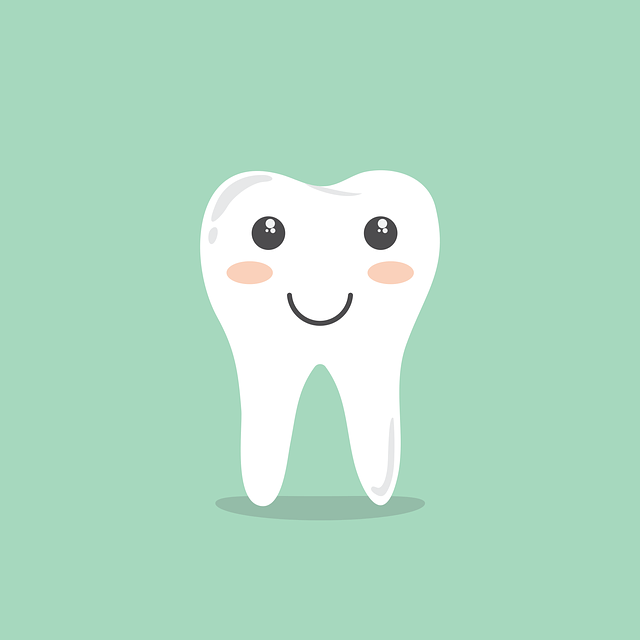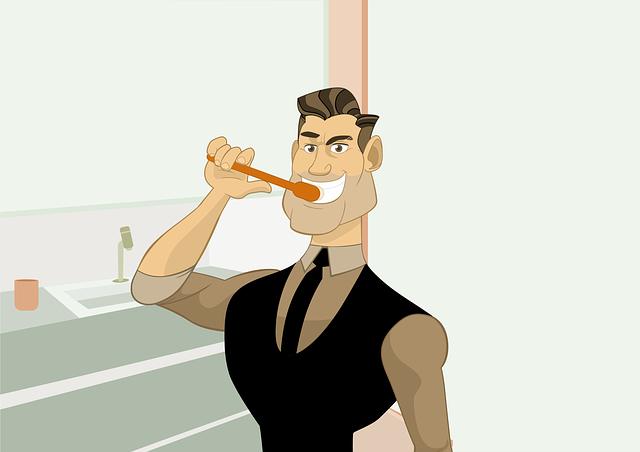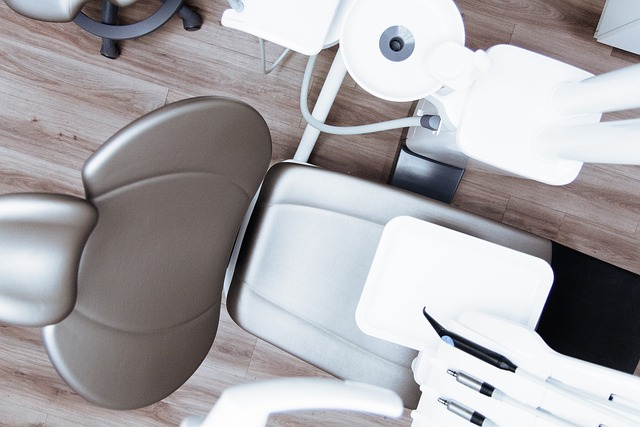Braces-Free Solution: Can You Get Retainers Without Having Braces?
Are you dreaming of achieving a perfectly aligned smile, sans the hassle of braces? Well, we’ve got some exciting news for you! Thanks to advancements in orthodontic technology, it is now possible to obtain retainers without the need for braces. Yes, you heard that right – braces-free retainers! In this article, we will explore this revolutionary orthodontic solution, shedding light on the process, effectiveness, and benefits of acquiring retainers without enduring the traditional braces experience. So, if you’re curious to know whether you can straighten your teeth without the metal brackets and wires, buckle up and read on!
1. Understanding the Purpose of Braces and Retainers: A Comprehensive Overview
Braces and retainers are orthodontic devices that are commonly used to improve the alignment and appearance of teeth. They serve different purposes and are recommended by orthodontists based on individual needs. Understanding the purpose of braces and retainers is essential to make informed decisions about orthodontic treatment. Here is a comprehensive overview of these devices:
Braces:
- Braces are fixed appliances that consist of brackets, wires, and bands.
- They are designed to apply gentle pressure on the teeth, gradually moving them into the desired position.
- Braces are highly effective in correcting various orthodontic issues, such as overcrowding, gaps, crooked teeth, overbites, and underbites.
- They work by exerting force on the teeth, causing them to shift and align over time.
- Orthodontists use different types of braces, including traditional metal braces, ceramic braces, and clear aligners, depending on the patient’s needs and preferences.
Retainers:
- Retainers are removable orthodontic devices that are used after braces to maintain the newly achieved alignment of the teeth.
- They help prevent teeth from shifting back to their original positions, which can occur naturally as the oral structures adjust.
- Retainers are custom-made for each patient and are usually worn for a specified period, initially full-time and then gradually reduced to wearing only at night.
- They can be made of different materials, such as clear plastic or metal wires, and come in different types, including Hawley retainers and clear retainers.
- Regular use of retainers is crucial to ensure long-term orthodontic success and to prevent the need for additional treatment in the future.

2. Exploring Alternatives: Are Braces the Only Solution for Orthodontic Treatment?
Orthodontic treatment is often associated with braces, but it’s important to know that braces are not the only solution available. Advancements in orthodontics have brought forth alternative treatments that can effectively address various dental issues. Here, we will explore some of these alternatives and their benefits:
Invisalign: One popular alternative to braces is Invisalign. This treatment involves the use of custom-made, clear aligners that gradually shift teeth into their proper position. Invisalign aligners are virtually invisible, making them a discreet option for those who prefer a more subtle approach. They can be easily removed for eating, brushing, and flossing, allowing for better oral hygiene compared to traditional braces. Invisalign is also known for providing more comfort as there are no wires or brackets to cause irritation.
Clear aligners: Similar to Invisalign, there are other brands of clear aligners available that offer similar benefits. Clear aligners are custom-made to fit snugly over the teeth and are designed to gradually move them into the desired position. They are removable, making it easier to maintain oral hygiene and enjoy a wider variety of foods compared to traditional braces. Clear aligners are a great option for individuals who want to correct their smile without the noticeable appearance of braces.

3. The Role of Retainers in Orthodontic Care: An Effective Braces-Free Solution
Retainers play a crucial role in orthodontic care, providing an effective solution for maintaining the results achieved after braces are removed. Unlike braces, retainers are braces-free and offer a more discreet option for patients. These removable devices are custom-made to fit comfortably over teeth, helping to keep them in their new, desired positions.
One of the main purposes of retainers is to prevent teeth from shifting back to their original positions. After braces are removed, the teeth may have a tendency to shift due to the natural forces exerted by the surrounding tissues. Retainers serve as a means to stabilize the teeth and prevent any unwanted movement. By wearing retainers as prescribed by an orthodontist, patients can ensure that their teeth remain aligned and maintain the beautiful smile they worked so hard to achieve.
- Retainers are typically worn full-time for the first few months after braces removal, gradually transitioning to nighttime wear only.
- They are made from durable materials, ensuring their longevity and effectiveness.
- Retainers also serve to protect the investment made in orthodontic treatment by preserving the results achieved.
Regular follow-up appointments with the orthodontist are essential to monitor the progress and make any necessary adjustments to the retainers. By diligently wearing retainers as instructed and attending these appointments, patients can enjoy the benefits of a lasting, beautiful smile without the need for braces.

4. Can You Skip Braces and Go Straight to Using Retainers? Debunking Common Myths
Skipping braces and using retainers straight away is a common myth in the world of orthodontics. However, it is important to debunk this misconception and understand the reality behind it.
First and foremost, braces play a crucial role in aligning your teeth and correcting any bite issues. They apply gentle pressure to gradually shift your teeth into the desired position. This process cannot be skipped as it ensures the stability and longevity of the final results. By skipping braces and going straight to using retainers, you may not achieve the desired outcome and could potentially experience relapse, where your teeth shift back to their original position.
- Braces help to straighten crooked teeth and correct bite issues, such as overbite, underbite, or crossbite.
- They provide a controlled and precise method of moving teeth into their correct alignment.
- Skipping braces can lead to relapse, where teeth shift back to their original position.
- Retainers, on the other hand, are designed to maintain the results achieved with braces.
- After completing the braces treatment, retainers are typically used to hold the teeth in their new position and prevent any unwanted shifting.
- Retainers cannot effectively straighten teeth on their own, making it essential to go through the braces phase first.
It is important to consult with an orthodontist who can assess your specific dental needs and recommend the most appropriate treatment plan for you. Remember, the journey to a beautiful and healthy smile requires patience and adherence to the recommended orthodontic procedures.

5. Who Can Benefit from Retainers without Braces? Evaluating Candidacy for this Orthodontic Option
Retainers without braces can be a viable orthodontic option for individuals who have already completed their braces treatment and want to maintain the results achieved. This option is particularly beneficial for:
- Patients with minor tooth misalignments or relapse: Retainers without braces can help correct minor misalignments that may have occurred after braces treatment or as a result of natural shifting over time.
- Individuals seeking a discreet solution: Unlike braces, retainers are virtually invisible when worn, making them an ideal choice for those who prefer a more discreet orthodontic option.
- Patients with excellent oral hygiene habits: Since retainers without braces are removable, individuals must have disciplined oral hygiene habits to ensure proper care and maintenance of the retainers.
It is important to note that retainers without braces are not suitable for everyone. Candidates for this orthodontic option should meet the following criteria:
- Completed braces treatment: Retainers without braces are designed for individuals who have already completed their braces treatment and achieved the desired tooth alignment.
- Good compliance and responsibility: Consistent wear of retainers is crucial to maintain the results. Candidates must be committed to wearing their retainers as prescribed by their orthodontist.
- No major bite or alignment issues: Retainers without braces are typically not recommended for individuals with severe bite problems or extensive tooth misalignments. In such cases, alternative orthodontic options may be more suitable.
If you are considering retainers without braces, it is essential to consult with an experienced orthodontist who can evaluate your specific dental needs and determine if this option is suitable for you. They will assess your candidacy based on various factors, ensuring you receive the most appropriate orthodontic treatment for your unique situation.
6. The Pros and Cons of Opting for Retainers without Braces: Weighing the Benefits and Risks
When it comes to straightening teeth, many individuals consider the option of opting for retainers without braces. While this alternative may seem appealing, it is essential to carefully weigh the benefits and risks before making a decision. Here are the pros and cons to help you make an informed choice:
Pros:
- Discreet: One of the significant advantages of using retainers without braces is their discreet appearance. Unlike traditional braces, retainers are often barely noticeable, allowing individuals to maintain a more natural smile during the teeth straightening process.
- Easier Oral Hygiene: Retainers can be removed, making it easier to clean both the retainer itself and the teeth. With braces, cleaning can be more challenging, as wires and brackets can trap food particles, potentially leading to plaque buildup or tooth decay.
- Comfort: Retainers are generally more comfortable to wear than braces. They do not involve brackets or wires that could cause discomfort, irritation, or soreness in the mouth.
Cons:
- Longer Treatment Time: Opting for retainers without braces may result in a longer treatment duration compared to traditional braces. Braces can exert more consistent pressure on the teeth, allowing for quicker and more precise alignment.
- Less Severe Corrections: While retainers can effectively address mild to moderate teeth misalignments, they may not be suitable for more severe orthodontic issues. In such cases, braces or other orthodontic interventions may be required for optimal results.
- Self-Discipline: Retainers require a high level of self-discipline to ensure they are consistently worn as instructed by the orthodontist. Failure to wear the retainers as prescribed can hinder progress and potentially reverse any improvements made.
Considering these pros and cons is crucial when deciding whether to choose retainers without braces. It is advisable to consult with an experienced orthodontist who can evaluate your specific dental needs and help you determine the most suitable treatment option for achieving your desired smile.
7. Consulting an Orthodontist: Making an Informed Decision about Braces and Retainers
When it comes to getting braces or retainers, consulting an orthodontist is crucial in making an informed decision. Orthodontists are specialized dentists who have undergone additional training to diagnose, prevent, and treat dental and facial irregularities. By seeking their expertise, you can ensure that you receive the most suitable treatment for your specific needs.
During your consultation with an orthodontist, they will thoroughly examine your teeth and bite alignment. They may take X-rays or use other diagnostic tools to assess your dental condition. Based on their evaluation, they will discuss the available treatment options with you and explain the potential benefits and drawbacks of each. This will enable you to make an educated decision about whether braces or retainers are the right choice for you. Additionally, the orthodontist will provide detailed information about the treatment process, including the duration, expected discomfort, and maintenance requirements. By consulting an orthodontist, you can gain valuable insights and make an informed decision about improving your dental health.
Frequently Asked Questions
Q: Can you get retainers without having braces?
A: Absolutely! Retainers can be used as a standalone treatment or as a follow-up to braces.
Q: How do retainers work?
A: Retainers are custom-made devices designed to hold your teeth in their corrected positions. They apply gentle pressure to prevent your teeth from shifting back.
Q: Are retainers as effective as braces?
A: While retainers are not meant to correct major dental issues, they are highly effective in maintaining the results achieved through braces or other orthodontic treatments.
Q: What are the different types of retainers available?
A: There are generally three types of retainers: removable retainers, fixed retainers, and clear aligner-style retainers. The choice depends on your specific needs and preferences.
Q: How long do retainers need to be worn?
A: The duration of retainer wear varies depending on the individual case. Generally, retainers are worn full-time for the first few months and then gradually transitioned to nighttime wear only.
Q: Are retainers uncomfortable to wear?
A: Retainers may feel slightly uncomfortable at first, but most people adjust to them within a few days. If any discomfort persists, it’s important to consult your orthodontist.
Q: Can retainers be used to close gaps or correct crooked teeth?
A: Retainers alone cannot correct major dental issues, such as closing gaps or straightening severely crooked teeth. However, they can be used in conjunction with other treatments for optimal results.
Q: How do I care for my retainers?
A: Proper care of your retainers is crucial to maintain their effectiveness. This includes cleaning them regularly, avoiding hot water, and storing them in a protective case when not in use.
Q: Do I need to wear retainers for the rest of my life?
A: Generally, retainers are worn for an extended period after orthodontic treatment. However, the duration varies depending on the individual case. Your orthodontist will provide guidance on the recommended wear time.
Q: Can I get retainers without consulting an orthodontist?
A: It is essential to consult an orthodontist to determine if retainers are suitable for your specific dental needs. They will assess your situation and provide professional guidance to ensure the best outcome.
In Retrospect
In conclusion, for those wondering if it is possible to get retainers without having braces, the answer is yes. While braces are often recommended to correct misalignments and bite issues, retainers can be a braces-free solution for minor adjustments and maintaining the results achieved after braces. It is essential to consult with an orthodontist to determine the best course of action based on individual needs and goals. Retainers are custom-made devices that help keep the teeth in their new positions, preventing relapse and ensuring a straighter smile. Remember, the key to successful orthodontic treatment lies in regular check-ups and following the orthodontist’s recommendations. So, if you are looking for a braces-free alternative, retainers may be the answer you’ve been searching for.






